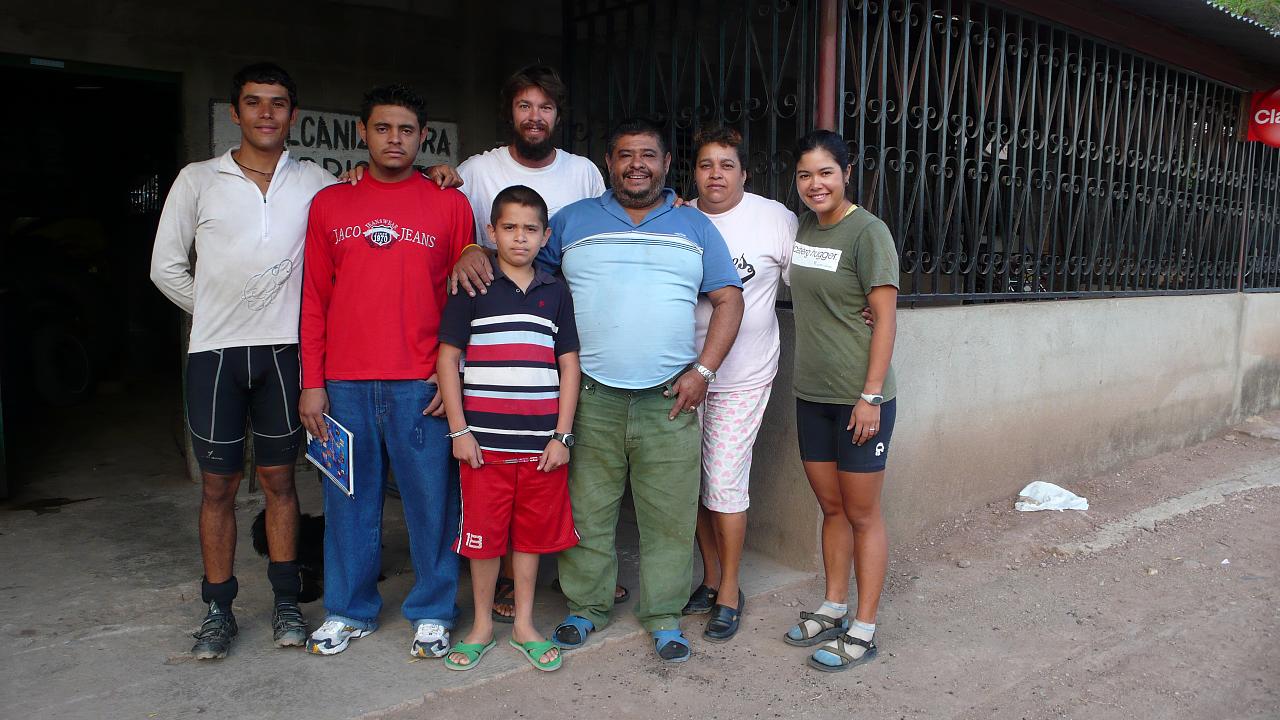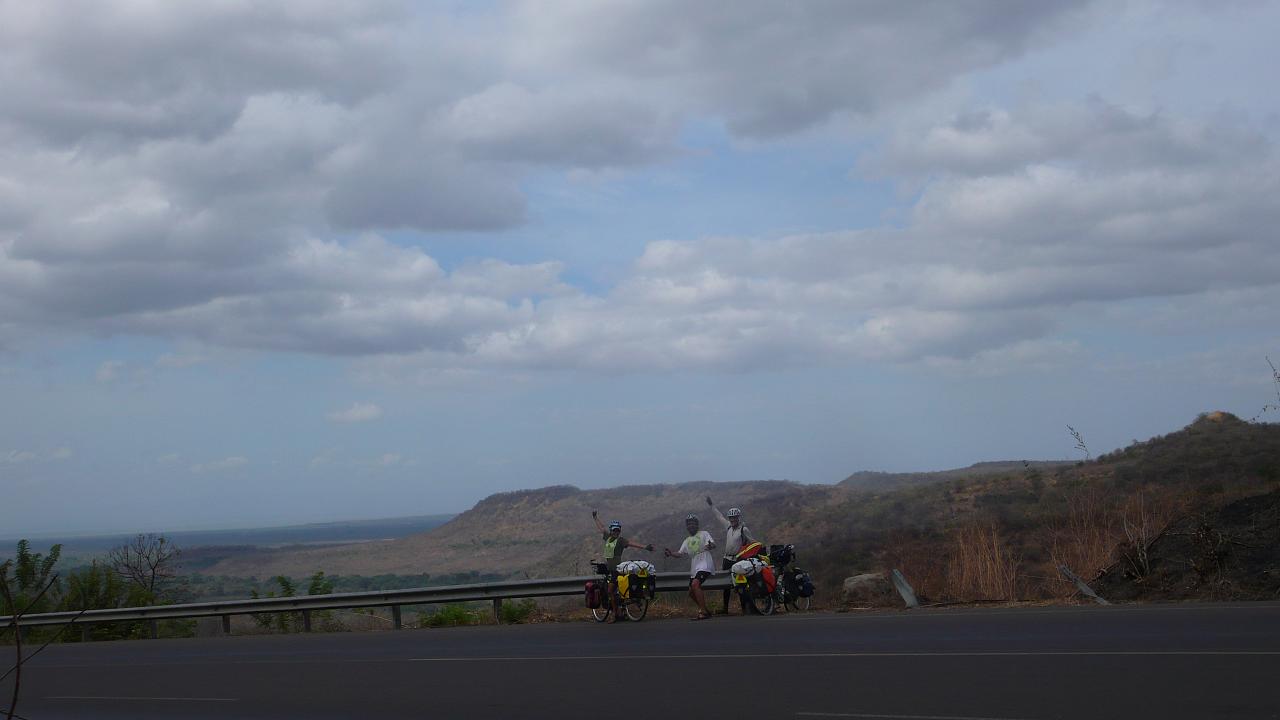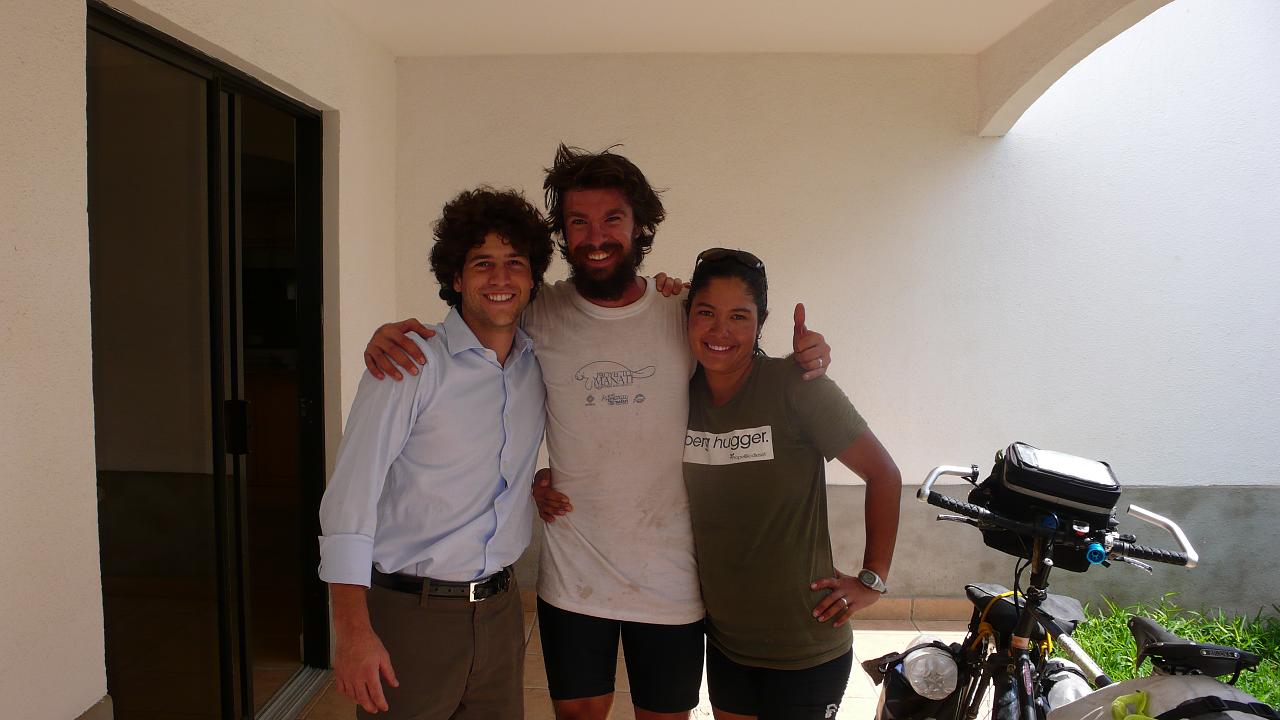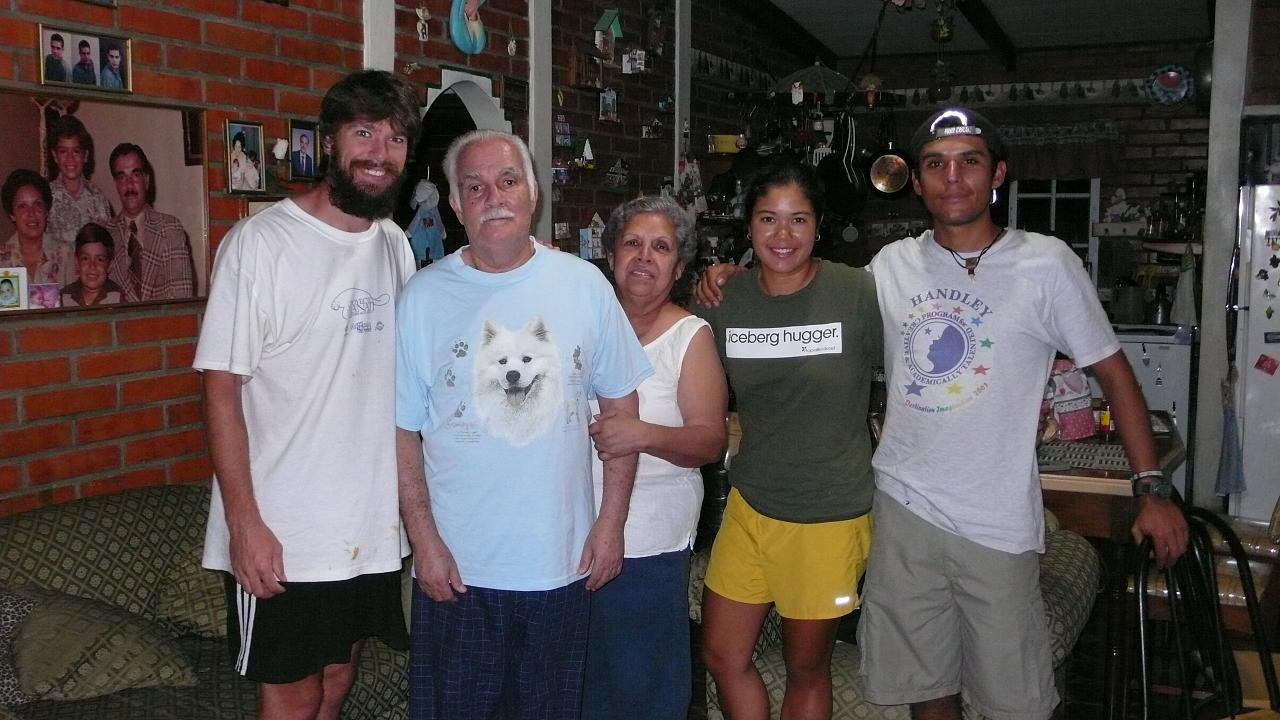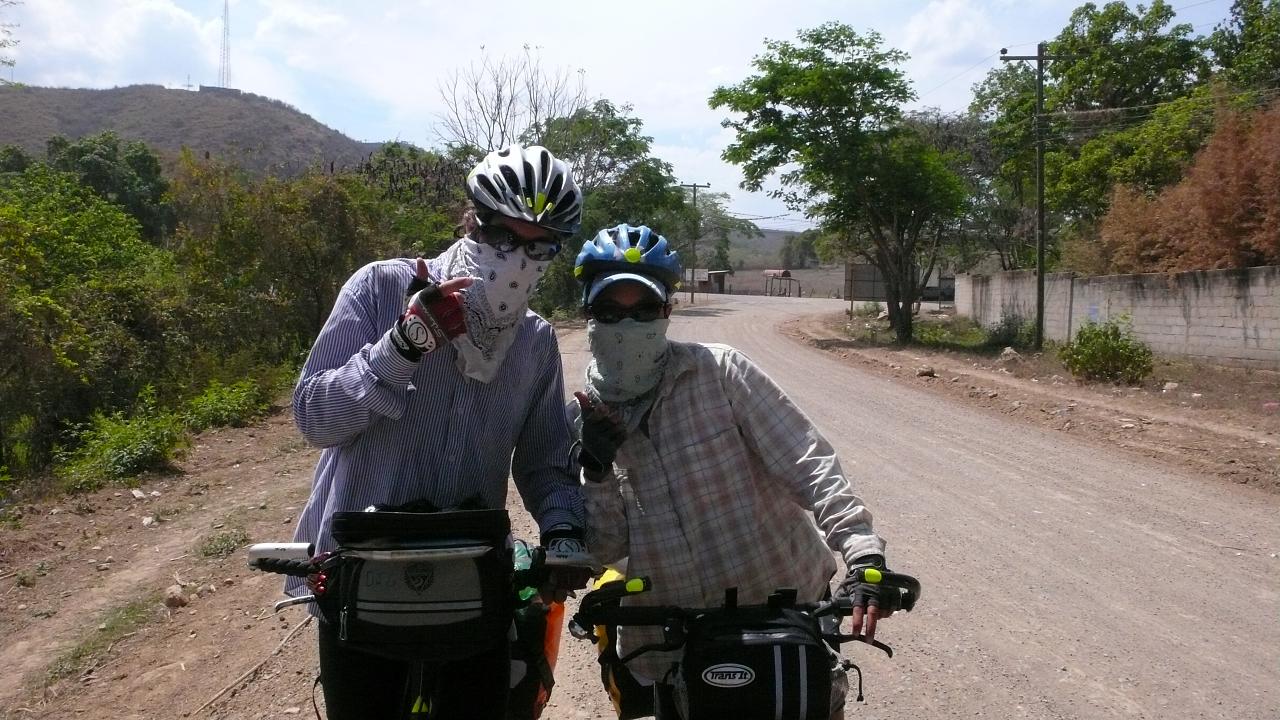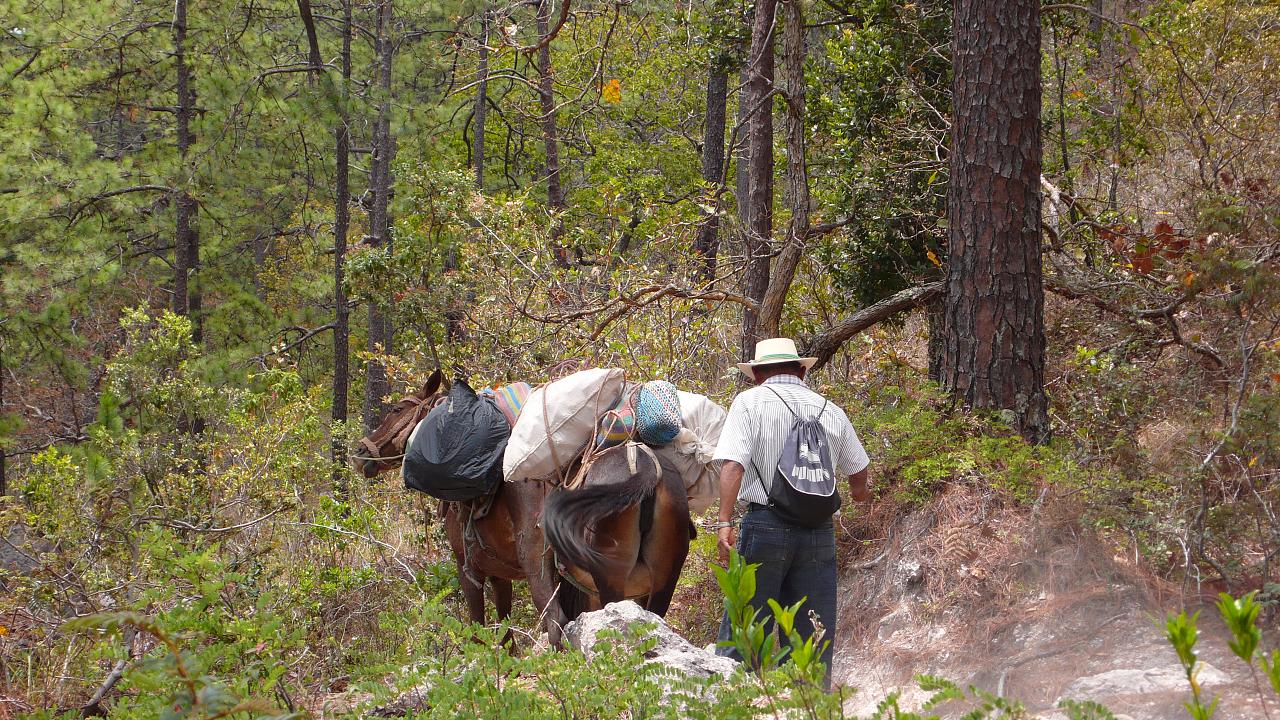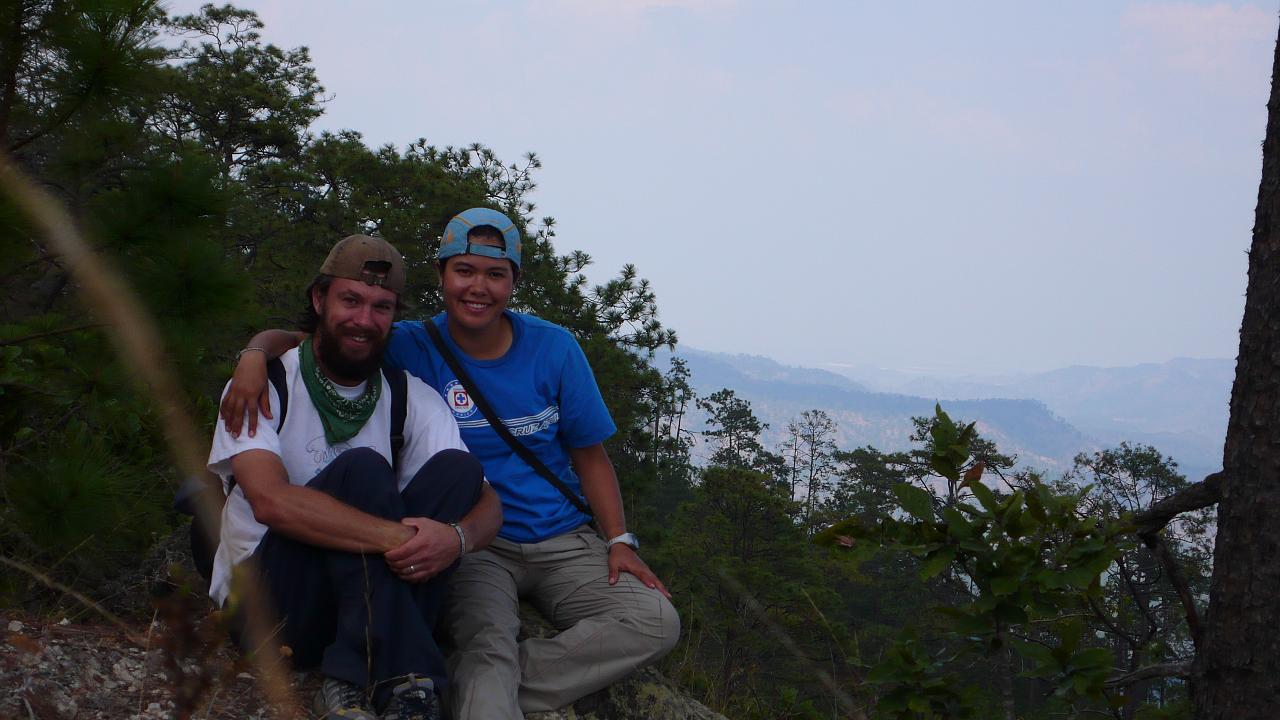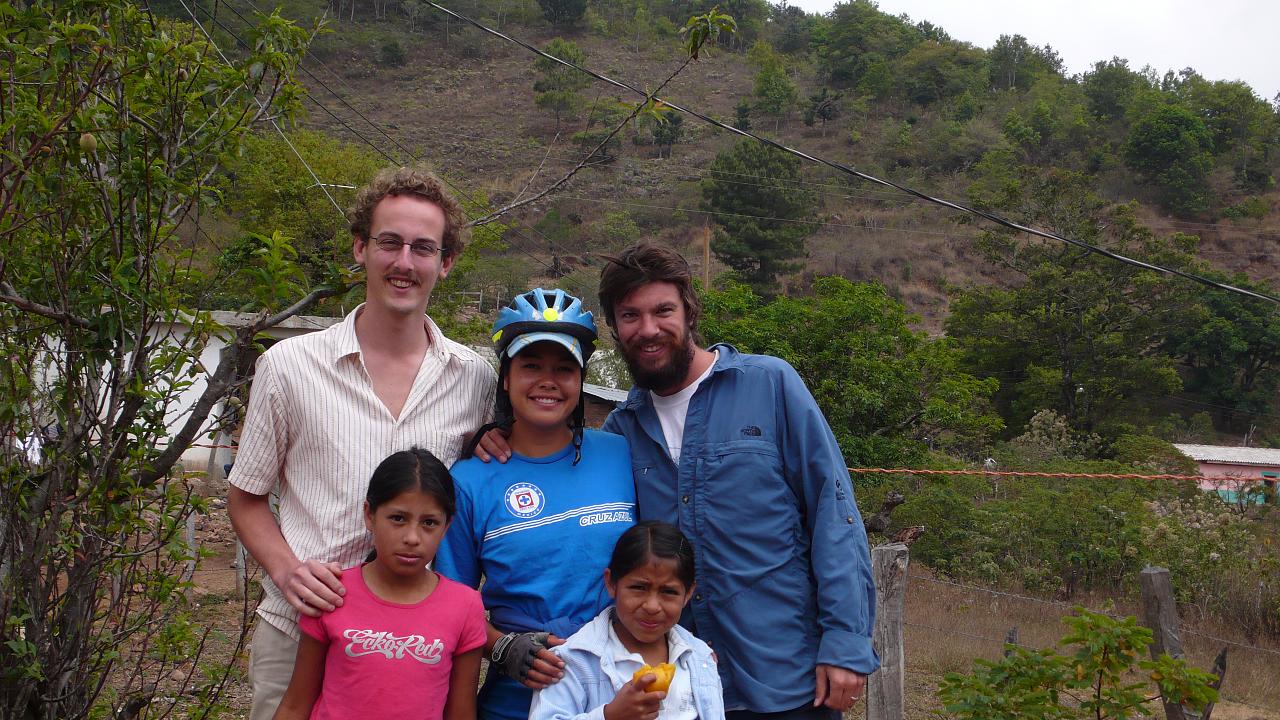Just a couple of days after arriving in Managua, another good friend, Steve, flew in from Ecuador to spend some time with us before heading back to the States. It was also right around my birthday (I, David, am writing this part- but just this paragraph, I have nothing to do with the rest of this blog ;) ) and we headed out to Guacalito which is on the Pacific coast of Nicaragua near San Juan del Sur for a weekend of beach bumming. Before heading there we hit up the mercado in Granada and to add to our fun and the confusion of the mercado we decided to drive through the mercado causing us to feel like a bull in Pamplona.

The company that Enrique works for is developing the area into a giant high end private beach resort. Right now however they are still in the planning phase and and the beach is empty, beautiful, private and just our speed. We stayed in a little "ranchito" they have there - just some basic rooms and beds and a kitchen- all you need for a weekend on the beach. So we spent the whole weekend body surfing in too big of waves (the sunset session with the full moon rising over the hill at the same time was KILLER),
 cooking and eating some good food, walking around checking out the place, teasing the howler monkeys that were hanging out right next to the ranchito, talking about life, eating tamarindos until our mouths were full of canker sores, watching the sunsets, staring at the stars, getting astrology lessons scratched in the beach sand from Enrique, walking the beach in the full moonlight, falling asleep on the beach looking at the stars and talking about the most important things in life.
cooking and eating some good food, walking around checking out the place, teasing the howler monkeys that were hanging out right next to the ranchito, talking about life, eating tamarindos until our mouths were full of canker sores, watching the sunsets, staring at the stars, getting astrology lessons scratched in the beach sand from Enrique, walking the beach in the full moonlight, falling asleep on the beach looking at the stars and talking about the most important things in life.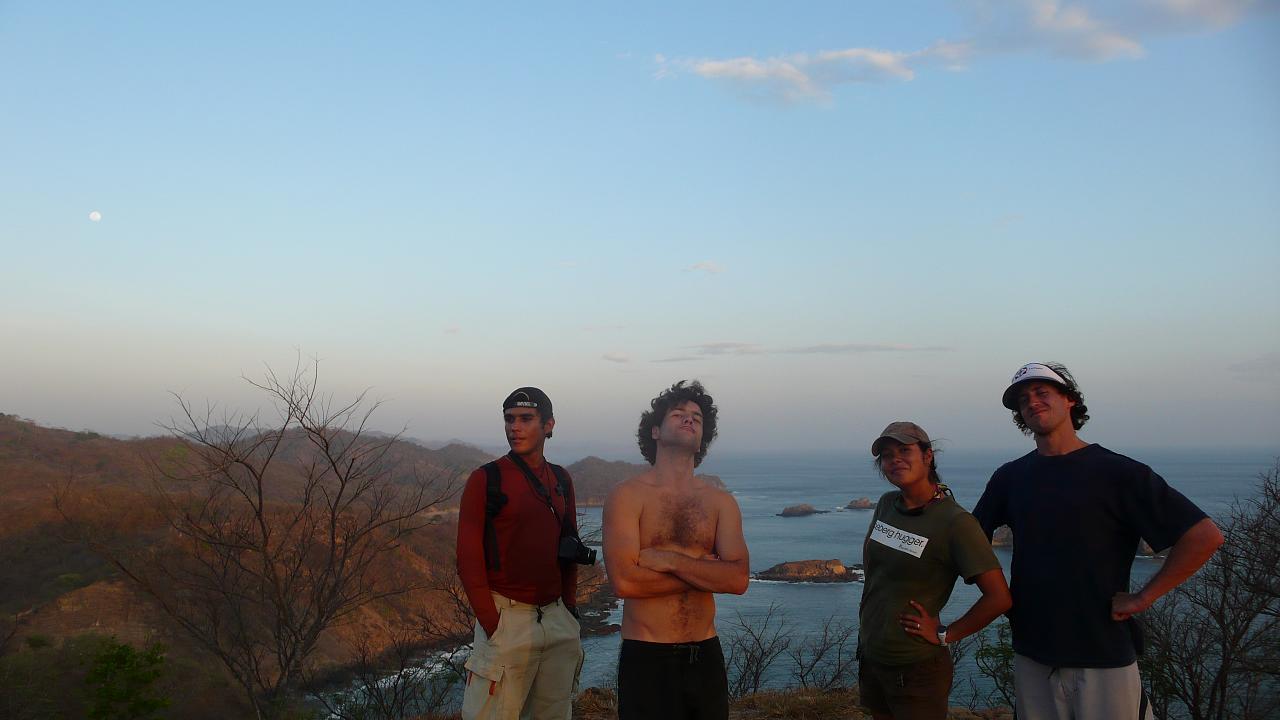 The other highlight was my birthday celebration. For the last two years I have been asking Leah for a pinata and finally we just happened to be walking through Mercado Huembes (a GIANT mercado that we get lost in for hours every time we go) and there was a section full of pinatas. I finally got my wish. We got a small one that looked strong enough for everyone to get a chance at it and picked out special candies to fill it.
The other highlight was my birthday celebration. For the last two years I have been asking Leah for a pinata and finally we just happened to be walking through Mercado Huembes (a GIANT mercado that we get lost in for hours every time we go) and there was a section full of pinatas. I finally got my wish. We got a small one that looked strong enough for everyone to get a chance at it and picked out special candies to fill it.  Isai climbed up in a tree with the pinata attached to a rope, Leah manned the camera and Steve and Enrique spun me around 27 times. I then proceeded to swing like a mad man, of course nowhere near the pinata, while everyone else laughed hysterically at my haphazard approach to the game, I just wanted to make Isai's job easy... Steve and Enrique had somewhat more refined approaches to the pinata, walking around with the stick out until they felt the pinata, then "Barry Bonds"ing it. We finally broke it open and found out that half of the candy really sucked.
Isai climbed up in a tree with the pinata attached to a rope, Leah manned the camera and Steve and Enrique spun me around 27 times. I then proceeded to swing like a mad man, of course nowhere near the pinata, while everyone else laughed hysterically at my haphazard approach to the game, I just wanted to make Isai's job easy... Steve and Enrique had somewhat more refined approaches to the pinata, walking around with the stick out until they felt the pinata, then "Barry Bonds"ing it. We finally broke it open and found out that half of the candy really sucked. At the end of the weekend we stopped in Granada on our way home so that Enrique could introduce us to a couple of Nicaraguan treats, quesillos and cacao refrescos. The quesillo is stretchy cheese (called quesillo) wrapped in a corn tortilla, placed in a plastic bag with some spicy pickled chilis and creme. The bag is tied in a knot, you bite one corner off and squeeze the tortilla, cheese, creme and chili through the hole. The cacao refresco is ice, milk, cacao, sugar and cinammon (I think) in a bag with a straw in it. Together they hit the spot!
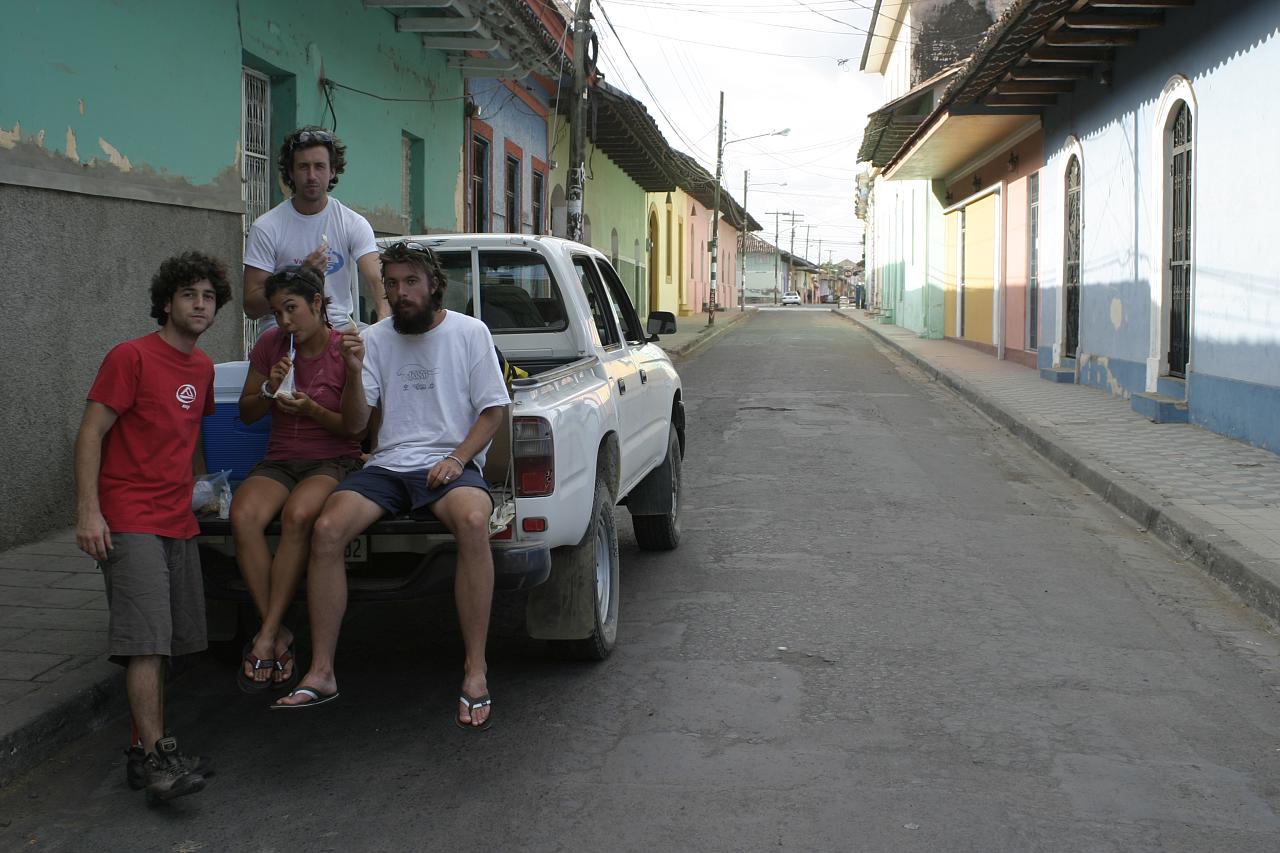
After saying our goodbyes to Steve and Isai a few days later (Steve back to the States and Isai back on his bike to go to Monteverde, Costa Rica for a volunteer job), we were ready for another adventure. Enrique was also leaving to spend a week in Costa Rica and we figured there was no reason to putz around big city Managua when beautiful beaches on the Atlantic coast called us. We decided to go by bus rather than bike so that we would be back in Managua around the time Enrique returned from Costa Rica. So, we packed up for a trip clear across the country. Unfortunately, the only bags we have are our panniers and two big dry bags without straps, so we weren't quite as comfortable walking around as our backpacking counterparts we encountered on the buses were.
The bus ride from Managua to El Rama (2/3 of the way across the country) took 8 hours (by far our longest yet) and went through the ranch land areas of Nicaragua. Not so green, but scenic nonetheless, with open pasture, volcanic cinder cones, and cows cows cows. We arrived in El Rama and then headed to Laguna de las Perlas where we hoped to catch a ride on a boat to one of the Pearl Cayes to camp on our own deserted island for a few days. To our dismay, this involved another 3 hours by minibus, but this time it was on dirt/gravel road through green pastures, forest, big controlled burns, and later sand and palm groves. Finally, we arrived in Laguna Perlas much more tired than we imagined we'd be simply from sitting on buses all day.
The Atlantic coast of Nicaragua is very different from the rest of the country, so here's a bit of background for y'all. The population is similar to that of the Belizean and Honduran Atlantic coast people-- some Garifuna (and other groups of African descent), some mestizo (what people refer to there as "Spaniards"), and also a few indigenous groups with the most populous being the Miskito people. And as if the visual difference isn't shocking enough, they speak English (as well as each subgroup speaking their native tongue, namely Miskito and Spanish in Laguna Perlas). So, as you can imagine, we really did feel like we had left Nicaragua and entered another country upon getting off the bus.
We spent a few days wandering around Laguna Perlas taking in the sights and asking around about how to get to the Cayes. We met a very nice fisherman and sat on his porch and talked for a few hours with him about life in Laguna Perlas. He told us that it's hard to find work if you aren't fishing and that even as a fisherman it's hard to make a decent living. Gas costs around $6 USD per gallon there and it takes most boats about $100 USD in gas to get out to the good fishing areas and back. Ouch, not really a day trip as you can imagine. But, lobster season was starting soon so the town was a buzz with people fixing lobster traps and salivating at the thought of more money in their pockets. The fisherman we spoke with ingeniously came up with his own solution to decrease his business expenses (legally, thank goodness) and...he built a sailboat, which he had just completed the week before. He hadn't fished with it yet, but was very excited to begin using it. He also showed us his homemade shotgun (illegal, complete with the foam sole of a slipper to pad his shoulder) and proudly told us about all the animals he's killed with it. Over 150 deer and four jaguars in the past six years, among numerous capybaras and other animals I can't remember (also illegal, we're not so fond of those types of stories). Before leaving, we of course listened to his tirade on the current President and his account of the revolution (it seems most people we meet are very critical of the current President, Daniel Ortega. We haven't found a big fan yet and we're wondering if any exist as rich folks, poor folks, ex-pats, sandanistas, and liberals ALL have spontaneously divulged their lengthy and critical diatribe). We learned that during the revolution, when bullets started flying, the people in Laguna Perlas clambered onto boats and headed out to sea. He said lots of people died though and there was a lot of fighting going on in the area (which was news to me as I thought the fighting was more consolidated in the other half of the country), but the ocean was their safe haven.
Regrettably, we discovered that a camping trip to the Pearl Cayes wasn't going to work out. First, it would cost us around $200 USD to get there and back. Second, we didn't find anyone we trusted whole-heartedly to drop us off AND remember to pick us back up in a few days. And lastly (and perhaps the most convincing), there is known narco-trafficking in the area and many of the boats involved use the deserted cayes to stop off at. Hmmm... the decision to pick another location for our "honeymoon" wasn't so hard then. (David and I have started to call our side trips off the bike "honeymoons," mostly, so that we allow ourselves to have a good time without feeling too guilty about spending money on things like good food and decent hotels. Yeah, we're nerds, but the mind-trick works). We decided to move on to the Corn Islands after a friend highly recommended them to us (thanks Jason).
We left Laguna Perlas on a panga (small boat) to Bluefields and enjoyed the one hour ride on glassy inland waterways with mangroves and birds galore. The twice weekly boat to Big Corn Island was leaving the following morning, so we spent the afternoon and evening bumbling around Bluefields people watching and trying to find an ATM that would give us money (fruitlessly). Lets hope the one ATM on Big Corn Island works for us, we thought. We sampled quite possibly our favorite snack yet in Bluefields, bunuelos-- mashed cassava (like potato) wrapped around a little ball of cheese then deep fried, served with warm honey steeped with cloves and cinnamon on top. Riquisimo! We arrived at the ticket booth one hour early (at 6 am) to get our tickets for the boat to Big Corn as we had been advised to (apparently it fills up fast). After a bit of shuffling and elbowing to keep our place in line, we got our tickets and hopped on the boat for a '5-hour tour' (Gilligan's Island theme in the background :) ). Lamentably, the '5-hour tour' was less tour-like and felt like much more than 5 hours (for me). David got lucky, went outside early and found a spot where he was comfortable on the starboard side bow. My original spot in the cabin was far from comfortable as three passengers around me were throwing up (straight on the floor nonetheless and not cleaning it up) so the air in the cabin of the boat reeked of puke. I went outside of the cabin to find a more comfortable place to sit, but the only places were right on the bow or on the port side, both with their own drawbacks. The bow was moving up and down, up and down as we hit the swells and moving much too much for me to stave off seasickness for the entire trip, but the port side was getting the splash from the swells head on (along with a bit of rain). What to do?... I elected wet clothes over nausea and found a spot on the port side. As you can imagine, I arrived in Big Corn completely drenched and more than ready to get off that boat pronto. But the adventure wasn't over yet, one more boat ride to go to Little Corn Island, our "honeymoon" destination. After two hours on Big Corn and another fruitless attempt at the ATM, we left on a panga for Little Corn, just 30 mins away. Because we were unable to get any money out of the ATMs, we were restricted to quite a limited budget on Little Corn. Thank goodness for our tent we thought. As we pulled up to the dock on Little Corn, we immediately knew that it was just what we were looking for-- small island, few people, no cars or roads (just one sidewalk), crystal clear water. We finally let out a big sigh and settled into relaxation mode.

